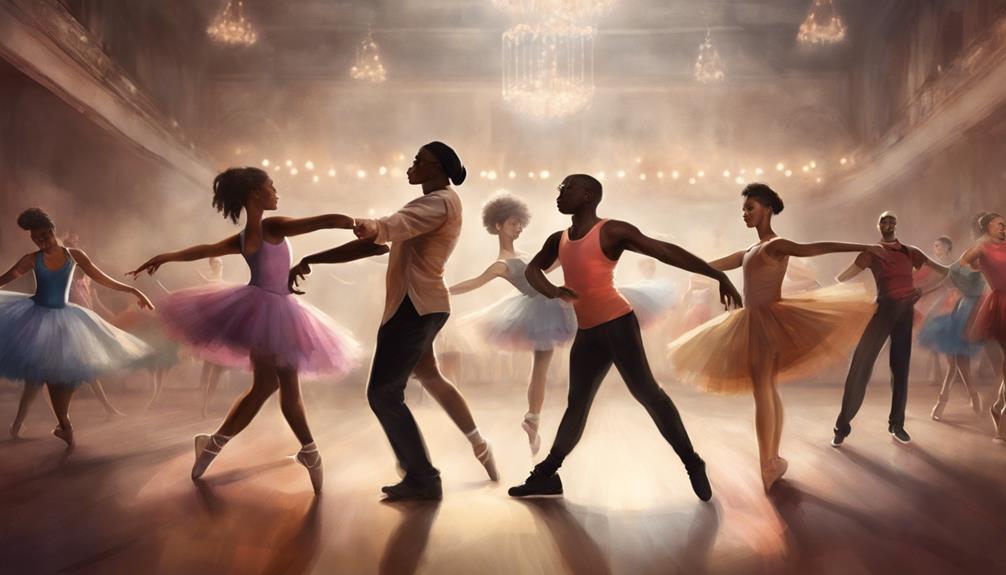The world of dance is a vast and diverse landscape, encompassing a myriad of styles that have evolved over centuries. Each type of dance, from classical ballet to urban hip-hop, offers a unique lens through which movement is expressed and interpreted. By examining the intricacies of various dance forms, we can begin to unravel the rich tapestry of human expression and creativity that spans across cultures and traditions. As we delve deeper into the nuances of different dance styles, we uncover a world where history, technique, and emotion intertwine to create a captivating display of artistry and skill.
Key Takeaways
- Ballet showcases classic elegance and precision in various subgenres.
- Ballroom dance emphasizes lead and follow techniques with formalized sequences.
- Contemporary dance breaks traditional molds, exploring new expressions through movement.
- Hip-Hop allows for free expression, showcasing skills and creativity in competitive battles.
Ballet: Classic Elegance and Precision
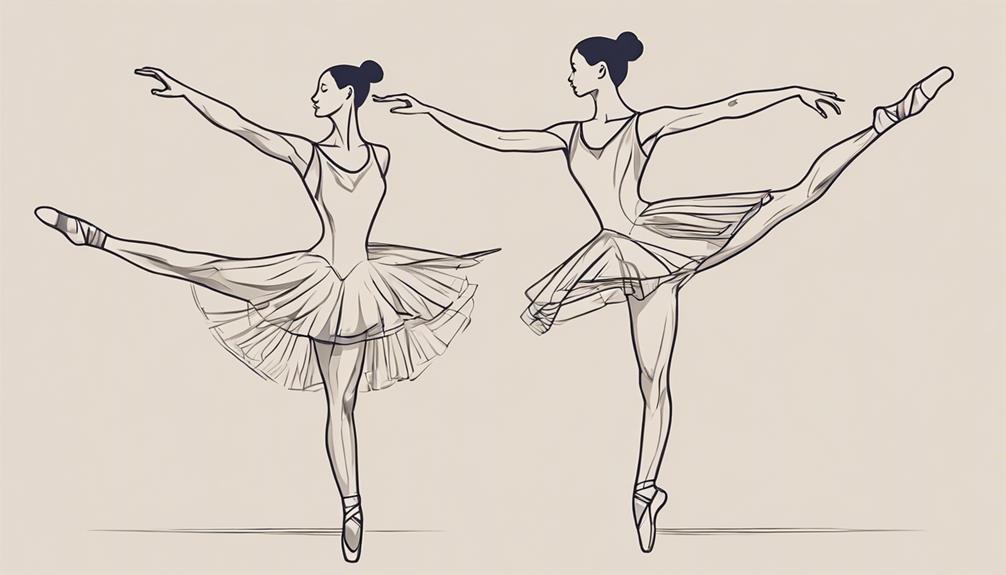
Ballet, with its classic elegance and precision, stands as a pinnacle of refined movement and artistic expression in the realm of dance. Rooted in classical dance styles, ballet is characterized by its graceful and precise movements choreographed to classical music. It encompasses various subgenres such as classic, romantic, neoclassical, and contemporary, each with its unique style and interpretation.
Professional training in ballet is rigorous and structured, focusing on mastering recognized methods and techniques. Dancers undergo extensive practice on specialized ballet dance floors and barres to perfect their craft. These surfaces, like the sprung dance floors such as Harlequin Standfast, are designed to absorb shocks and provide the ideal foundation for executing intricate ballet movements with finesse.
Renowned worldwide, ballet companies and schools showcase the beauty and grace of classical dance through dazzling performances that captivate audiences with their artistry and precision. The enduring allure of ballet lies in its ability to convey emotion, storytelling, and technical excellence through fluid movements and elegant choreography.
Ballroom: Graceful Partner Dancing
Characterized by intricate footwork and synchronized movements, Ballroom dance is a graceful partner dancing style that originated in 16th-century France. It encompasses elegant dances such as the Waltz, Viennese Waltz, Cha-Cha-Cha, Tango, and Rumba. The inclusion of Ballroom dance as an Olympic sport in 1995 underscores its global popularity and recognition. This dance form places a strong emphasis on lead and follow techniques, necessitating seamless coordination and synchrony between partners. Structured movements are a hallmark of Ballroom dancing, with dancers adhering to specific steps and patterns. These formalized sequences contribute to the appeal of Ballroom dance in social events and competitive arenas alike. The Waltz, known for its graceful turns, and the passionate Tango are just a few examples of the diverse range of styles within Ballroom dance. Through its blend of tradition, elegance, and skill, Ballroom dance continues to captivate audiences worldwide.
Contemporary: Innovative Expressions
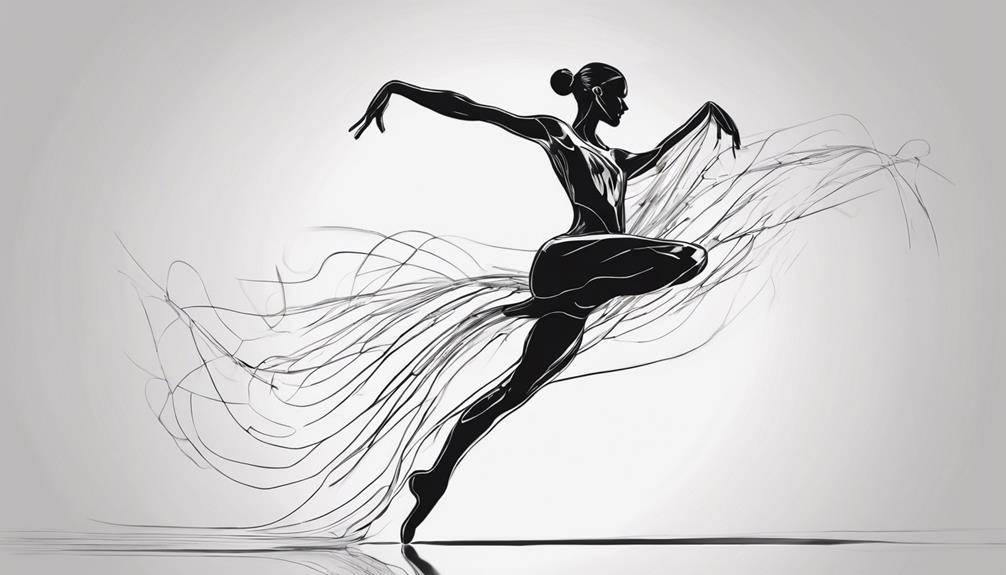
Drawing from a rich history of traditional partner dances, Contemporary dance emerges as a platform for innovative expressions that push the boundaries of movement and artistic exploration. Contemporary dance, which originated in the mid-20th century, combines technical prowess with creativity, drawing inspiration from a variety of dance styles. It emphasizes the seamless connection between the torso and intricate legwork, incorporating elements like fall and recovery and floor work to create fluid and captivating movements. Dancers in this style often perform on specialized shock-absorbing surfaces like Harlequin Activity sprung floors to support their dynamic actions. Contemporary dance is celebrated for its ability to break traditional molds and explore new avenues of expression through movement, making it a dynamic and ever-evolving art form.
| Innovative | Movement | Expression |
|---|---|---|
| Dynamic | Torso | Boundaries |
| Legwork | Fall and Recovery | Floor Work |
Hip-Hop: Urban Street Style
Hip-hop dance, rooted in the urban streets of the Bronx, New York in the early 1970s, showcases a dynamic and improvisational style characterized by unique movements and techniques. This urban street dance form encompasses various styles, with Breaking, Locking, and Popping being the main ones. Breaking involves acrobatic movements and floorwork, while Locking focuses on sudden stops and distinct poses. Popping emphasizes quick contractions and releases of muscles to create a popping effect in the body's movement.
Hip-hop dance is known for its improvisational nature, allowing dancers to express themselves freely through movement. It is often competitive, with dancers engaging in battles to showcase their skills and creativity. The popularity of hip-hop dance has been further propelled by its presence in music videos, where dancers often feature prominently, bringing the energy and flair of the street dance style to a broader audience.
To support the intricate footwork and dynamic movements of hip-hop dance, specialized dance flooring like Harlequin Freestyle is utilized, providing the necessary slip resistance and shock absorption required for this high-energy style.
Jazz: Rhythmic and Energetic Moves
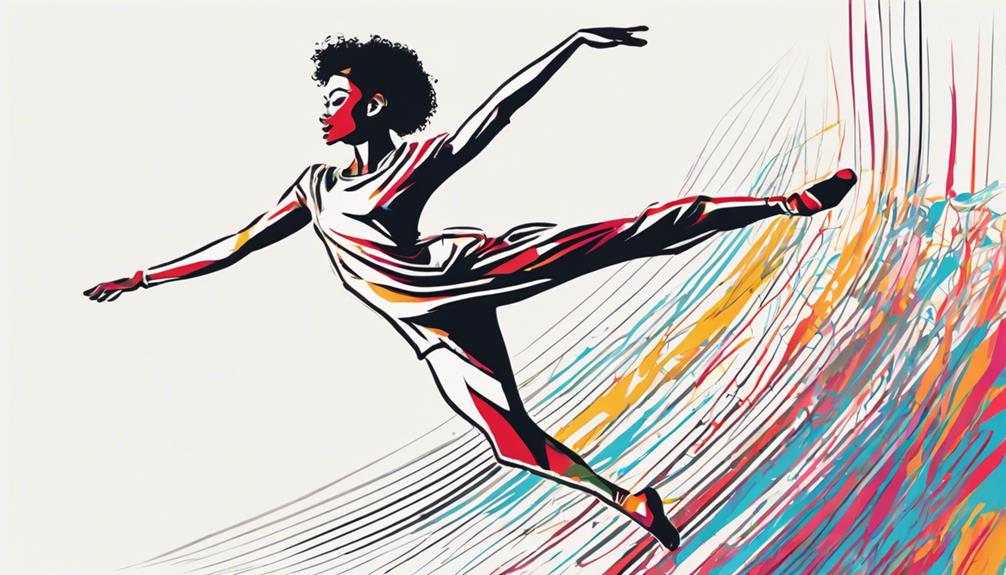
Jazz dance, with its origins deeply rooted in African traditions from the 17th century, showcases a distinctive blend of rhythmic intricacies and high-energy movements that have captivated audiences across various performance platforms. This energetic and rhythmic dance style has evolved over time, incorporating elements of African American vernacular dance to create a unique form of expression. Jazz dance is characterized by its improvisational and dramatic body movements, allowing dancers to showcase their individual expression and creativity on stage. Popularized in early 20th-century jazz clubs, jazz dance has since become a staple in musical theatre and concert stages, captivating audiences with its dynamic choreography and vibrant performances. This dance form continues to be a symbol of cultural diversity and creativity, reflecting the rich history and innovation that define jazz dance as a timeless and influential art form.
- Jazz dance blends rhythmic intricacies and high-energy movements.
- It incorporates elements of African American vernacular dance styles.
- Jazz dance emphasizes improvisational and dramatic body movements for individual expression and creativity.
Tap Dancing: Percussive Footwork
Tap dancing, known for its percussive footwork, is a form of dance that relies on rhythmic patterns and sounds produced by metal plates on the dancer's shoes. This style, originating in the mid-19th century, combines elements from various cultural dance forms to create intricate rhythms and syncopated beats. By striking the floor with precision and coordination, tap dancers communicate through the musicality of their footwork.
Tap Dance Basics
In the realm of percussive footwork within the dance domain, tap dancing stands out as a form that intricately weaves together historical influences and technical prowess. Tap dance is characterized by the creation of rhythmic sounds through the striking of the floor with metal taps attached to the dancer's shoes. This unique dance style incorporates intricate footwork patterns, syncopated rhythms, and improvisational elements, allowing dancers to showcase their musicality and technical skill. The special shoes worn by tap dancers, equipped with metal taps on the heel and toe, enable them to produce clear and sharp sounds while moving. Legends like Bill 'Bojangles' Robinson, Fred Astaire, and Gregory Hines have significantly contributed to the popularization and elevation of tap dance as a respected art form.
- Tap dance involves creating rhythmic sounds with metal taps on shoes
- Intricate footwork patterns are a key feature of tap dancing
- Famous tap dancers such as Bill 'Bojangles' Robinson and Gregory Hines have helped popularize the art form
Tap Dance Techniques
Rooted in the intricate interplay of percussive footwork and musicality, tap dance techniques exemplify the fusion of rhythmic expression and technical skill within the realm of dance performance. Tap dance involves creating rhythmic sounds by striking the floor with metal plates on special shoes. Dancers execute a variety of foot movements like taps, shuffles, flaps, and brushes to produce diverse rhythms. Techniques in tap dance encompass intricate footwork, syncopation, and improvisation, allowing for the creation of complex and dynamic rhythms. Performances can be solo or in groups, showcasing different styles of choreography. The utilization of special shoes with metal taps on the heels and toes enhances the auditory experience, making tap dance a visually and aurally captivating art form.
Tap Dance History
During the mid-19th century in the United States, tap dance emerged as a unique art form that synthesized elements of Irish jigging, English clog dancing, and African rhythmic traditions.
- Tap dance, initially known as 'buck-and-wing' dancing, evolved with the introduction of metal taps on shoes in the 1920s.
- The dance form gained popularity in vaudeville shows and Broadway musicals, where intricate footwork and syncopated rhythms were showcased.
- Influential figures like Bill 'Bojangles' Robinson and Fred Astaire played crucial roles in popularizing tap dance in mainstream entertainment during the 20th century.
Folk Dance: Cultural Traditions and Celebrations
Folk dances embody the cultural essence of communities, serving as vibrant expressions of historical narratives and social customs. These traditional dance forms are deeply intertwined with the celebrations and rituals of specific regions or ethnic groups, preserving their unique cultural heritage through festive events and symbolic movements. The significance of folk dances lies in their ability to foster unity, pride, and a sense of identity among participants, showcasing the rich tapestry of human traditions and emotions.
Festive Dance Events
Festive dance events play a significant role in cultural traditions and celebrations worldwide, providing a platform for communities to showcase their heritage and history through symbolic movements and vibrant performances. These events are not merely entertainment but serve as a means of preserving and passing down traditional dances from one generation to the next. They offer a glimpse into the cultural richness and diversity of different regions, with each dance carrying its unique story and significance. Festive dance events often feature expressive movements, traditional music, and elaborate costumes that add to the spectacle. Through these celebrations, communities strengthen their cultural identity, share their stories, and create lasting connections with each other.
- Folk dances preserve cultural heritage
- Festive events showcase vibrant costumes
- Symbolic movements convey rich traditions
Traditional Dance Forms
Traditional dance forms, rooted in cultural heritage and passed down through generations, embody the unique stories and emotions of diverse communities worldwide. Folk dances are traditional cultural expressions that often reflect historical events, emotions, and stories specific to a particular culture. These dance forms serve as a window into the past, showcasing the customs and traditions of various communities. Whether performed at festivals, ceremonies, or social gatherings, folk dances play a vital role in celebrating heritage and identity. They contribute to preserving intangible cultural heritage and strengthening community cohesion by fostering a sense of unity among participants. Across the globe, folk dances highlight the rich diversity of human traditions and customs, connecting people through shared experiences and values.
Cultural Significance of Dance
Dance, as a cultural practice deeply intertwined with societal customs and historical narratives, serves as a poignant reflection of community identity and values. Folk dances represent a unique cultural expression, showcasing traditional values and beliefs. They often narrate historical events, depict religious customs, or symbolize social traditions specific to a particular community. The distinctive styles, elaborate costumes, and rhythmic music associated with folk dances add richness to the cultural tapestry of different regions. These dances are not mere performances but integral parts of special occasions, festivals, and celebrations, where communities come together to celebrate their heritage and strengthen their bonds through shared experiences.
Irish Dance: Fast-paced and Traditional
Irish Dance, known for its rapid footwork and intricate formations, is a traditional dance form originating from Ireland. This dance style combines fast-paced movements with precise footwork, creating a visually captivating performance. Accompanied by lively music, Irish Dance often incorporates elements of storytelling and singing, adding depth to the performance. Dancers showcase their skills through both solo performances, highlighting individual talent, and group performances, where dancers move in synchronized formations, showcasing unity and precision.
One distinguishing feature of Irish Dance is the rigid upper body posture maintained by dancers while their feet perform intricate steps. This unique combination of upper body control and intricate footwork sets Irish Dance apart from other dance forms. To support the dynamic movements and protect the dancers' bodies, specialist dance floors such as Harlequin Standfast are recommended for Irish Dance performances. Overall, Irish Dance is a culturally rich art form that seamlessly blends tradition, music, storytelling, and impressive footwork.
Modern Dance: Artistic Freedom and Expression
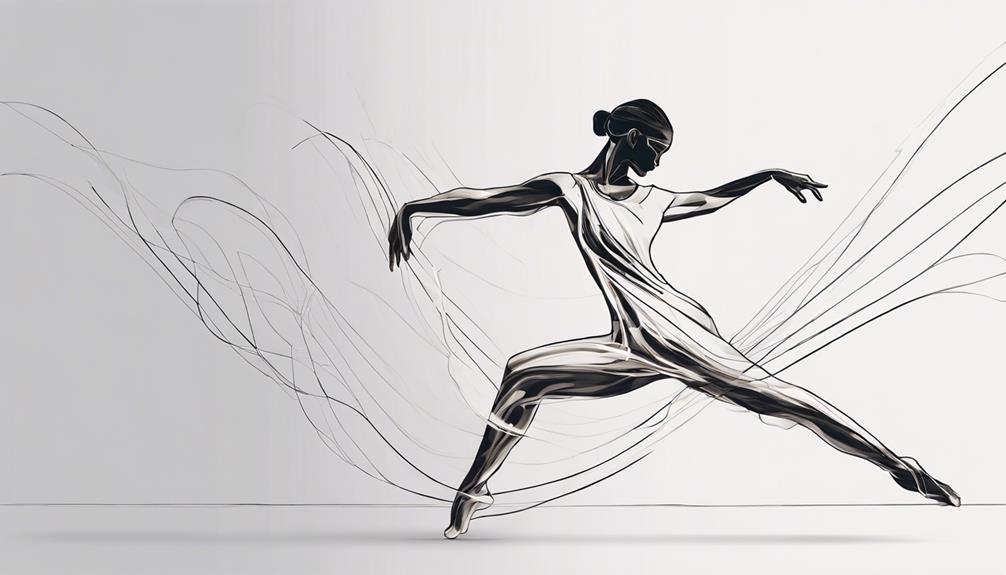
Modern dance, as a progressive and innovative art form, offers dancers unparalleled artistic freedom and a platform for profound expression through movement. Modern dance styles deviate from traditional ballet techniques, allowing dancers to explore new ways of moving and expressing themselves. In this genre, artistic freedom is at the core, enabling dancers to break free from the constraints of classical dance and delve into more abstract forms of expression.
- Dancers in modern dance styles focus on expressing emotion and ideas through movement, using their bodies as a canvas to convey deep feelings and concepts.
- Choreographers often incorporate elements of everyday movements and pedestrian gestures into modern dance routines, blurring the line between art and everyday life.
- Modern dance emerged as a reaction against the constraints and rigidity of classical ballet, providing a platform for dancers to rebel against traditional norms and explore a more fluid and interpretive approach to movement.
Frequently Asked Questions
What Are the 7 Genres of Dance?
The 7 genres of dance encompass a diverse range of styles, each with distinct characteristics and cultural influences. Ballet emphasizes classical techniques and narrative storytelling, while hip-hop incorporates street dance elements like breaking, locking, and popping. Contemporary dance explores innovative movements and expressions, jazz features syncopated rhythms and improvisation, and ballroom dancing focuses on partnership and formalized steps. Additionally, folk dancing, with its traditional elements, and Latin dancing, known for its energetic and sensual movements, contribute to the rich tapestry of dance genres.
What Are the 8 Types of Dance?
When exploring the realm of dance, one encounters a diverse array of styles, each with its own distinct characteristics and influences. Among the spectrum of dance types, one finds a juxtaposition between the structured elegance of ballroom dance and the energetic and urban flair of hip-hop. Contemporary fusion dance blends various styles to create innovative choreography, while traditional folk dances showcase cultural heritage. Latin rhythms, street jazz, ballet basics, tap techniques, and partner pairs and solo showcases further enrich the multifaceted world of dance.
Which Type of Dance Is Most Popular?
When comparing the popularity of different dance styles, factors such as cultural relevance, accessibility, and exposure play crucial roles. Ballroom dances like Waltz and Tango often appeal to a more traditional audience seeking grace and elegance, while Hip Hop and other contemporary styles cater to a younger demographic looking for innovation and self-expression. Additionally, the competitive nature of Ballroom versus the recreational aspect of Hip Hop can influence their respective popularity levels.
What Is the Hardest Dance Style?
When considering the hardest dance style, one must delve into the realm of techniques, footwork, choreography, routines, steps, sequences, and skills that demand rigorous training and mastery. The toughest moves in dance encompass extreme physical and mental demands, intricate steps, and complex choreography that challenge even the most skilled dancers. With intimidating performances and demanding techniques, the hardest dance style requires dedication, discipline, and a relentless pursuit of excellence.
Conclusion
In conclusion, the diverse types of dance offer a rich tapestry of history, technique, and expression. While some may argue that certain styles are outdated or irrelevant, it is important to recognize the cultural significance and artistic value that each dance form brings to the world of performing arts. By embracing the unique qualities of each style, we can appreciate the beauty and creativity that dance has to offer, evoking emotions that transcend boundaries and connect us on a universal level.
